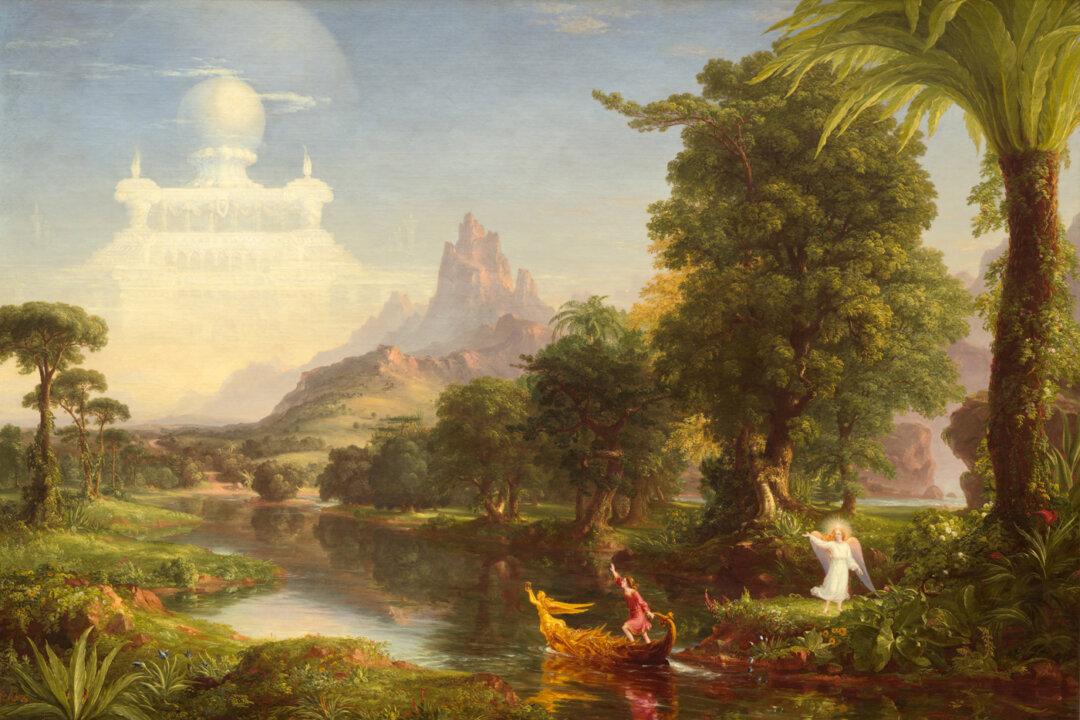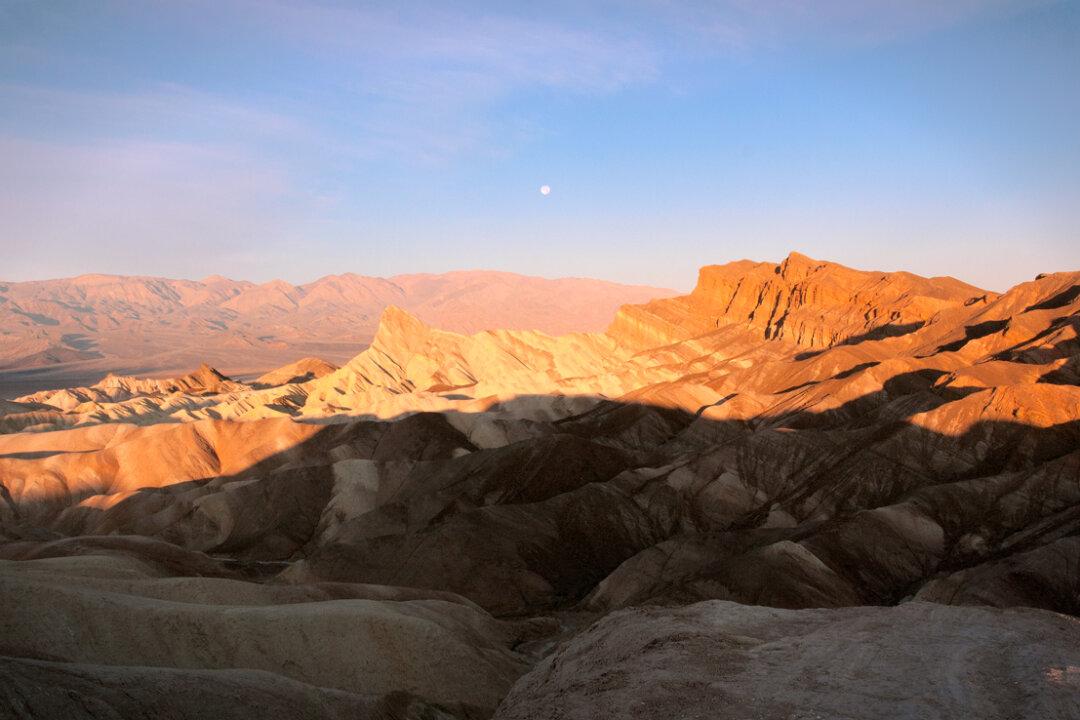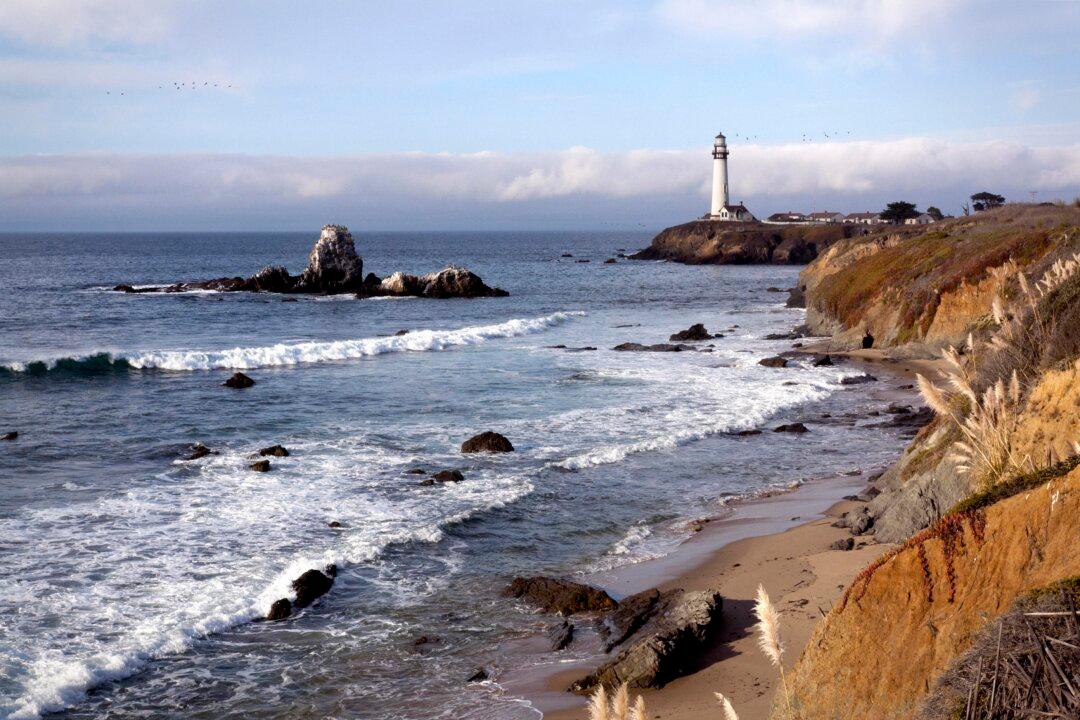America’s first great landscape painter, Thomas Cole, was a pivotal figure in the development of a distinctly American artistic identity in the early 19th century. Cole’s masterful landscapes range from picturesque compositions of America’s pristine wilderness to imaginative historical and allegorical scenes. The revered artist’s devotion to seeking the presence of God in nature inspired him to create depictions of divinity within the world and the human experience.
A prime example of this undertaking, and one of Cole’s most renowned series, “The Voyage of Life,” is a group of four paintings that illustrate the major stages in a man’s life: “Childhood,” “Youth,” “Manhood,” and “Old Age.”





